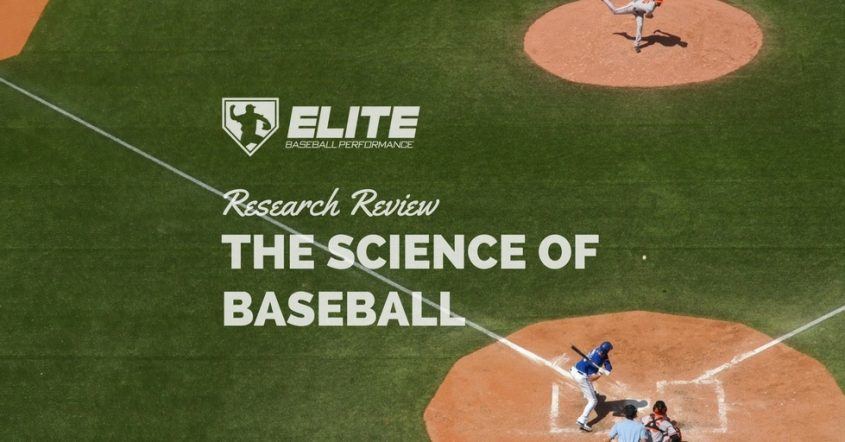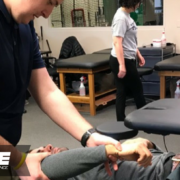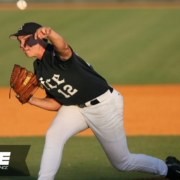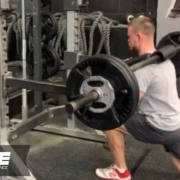Humeral Retroversion Occurs in Youth Baseball Players as Young as Fourth Grade
A recent research report out of Japan continues to add to the body of evidence regarding humeral retroversion in the dominant shoulder in baseball players. Essentially, the upper arm in baseball players has boney adaptations that occur while throwing as a youth with open growth plates. This allows for external rotation (layback) while throwing, and is also responsible for the shift in total rotational range of motion and subsequent loss of internal rotation.
While this has been known for some time, we continue to see that this happens at an early age. The authors of this study note that this occurred in youth athletes as young as in the 4th grade.
This boney adaptation is a requirement for throwing later in lift, showing the importance of needing to throw as a youth as young fourth grade.
Differences in humeral retroversion in dominant and nondominant sides of young baseball players.
J Shoulder Elbow Surg. 2017 Jan 25. pii: S1058-2746(16)30624-3. doi: 10.1016/j.jse.2016.11.051.
Author information
- 1Department of Sports Medicine and Orthopaedic Surgery, Tohoku Rosai Hospital, Sendai, Japan; Department of Orthopaedic Surgery, Tohoku University School of Medicine, Sendai, Japan.
- 2Department of Orthopaedic Surgery, Tohoku University School of Medicine, Sendai, Japan.
- 3Department of Physical Medicine and Rehabilitation, Tohoku University School of Medicine, Sendai, Japan.
- 4Department of Orthopaedic Surgery, Kurihara Central Hospital, Kurihara, Miyagi, Japan.
- 5Department of Orthopaedic Surgery, Kesen-numa City Hospital, Kesen-numa, Miyagi, Japan.
- 6Department of Sports Medicine and Orthopaedic Surgery, Tohoku Rosai Hospital, Sendai, Japan.
- 7Department of Orthopaedic Surgery, Tohoku University School of Medicine, Sendai, Japan. Electronic address: [email protected].
Abstract
BACKGROUND:
The relationship between the disabled throwing shoulder and humeral retroversion has recently attracted a great deal of attention. However, none of the previous studies clarified when the side-to-side difference of humeral retroversion in young baseball players would start. This study aimed to clarify when the difference of humeral retroversion in the dominant and nondominant sides appeared in baseball players.
METHODS:
The bicipital-forearm angle in bilateral shoulders of 172 elementary school baseball players was measured by ultrasound. The bicipital-forearm angle was defined as an angle between the perpendicular line to the bicipital groove and the ulnar long axis with the elbow flexed at 90°. The correlation between the bicipital-forearm angle and the grade and the difference of the bicipital-forearm angle between the dominant and nondominant sides were analyzed.
RESULTS:
In the nondominant shoulders, the bicipital-forearm angle increased with the grade in school (r = 0.32, P < .0001), but this was not observed in the dominant shoulders. In the fourth to sixth graders, the bicipital-forearm angles were significantly smaller in the dominant shoulders than in the nondominant shoulders.
CONCLUSION:
Our findings indicated that humeral retroversion decreased with age in the nonthrowing side but not in the throwing side and that the side-to-side difference of humeral retroversion in the baseball players became obvious from the fourth grade. We assume that the repetitive throwing motion restricts the physiologic humeral derotation process and the difference became apparent from the fourth grade when the growth spurt begins in boys.
Copyright © 2017 Journal of Shoulder and Elbow Surgery Board of Trustees. Published by Elsevier Inc. All rights reserved.
Mike Reinold
Latest posts by Mike Reinold (see all)
- 3 Ways Baseball Pitchers Can Use a Radar Gun to Enhance Performance - April 16, 2019
- 3 Things Baseball Players Need to Develop Elite Pitching Performance - January 15, 2018
- How to Get Your Arm Loose When Throwing Indoors - November 14, 2017









Trackbacks & Pingbacks
[…] Mike Reinold, former head Athletic Trainer for the Boston Red Sox and an expert on arm injuries, has this to say about humeral retroversion: […]
Leave a Reply
Want to join the discussion?Feel free to contribute!